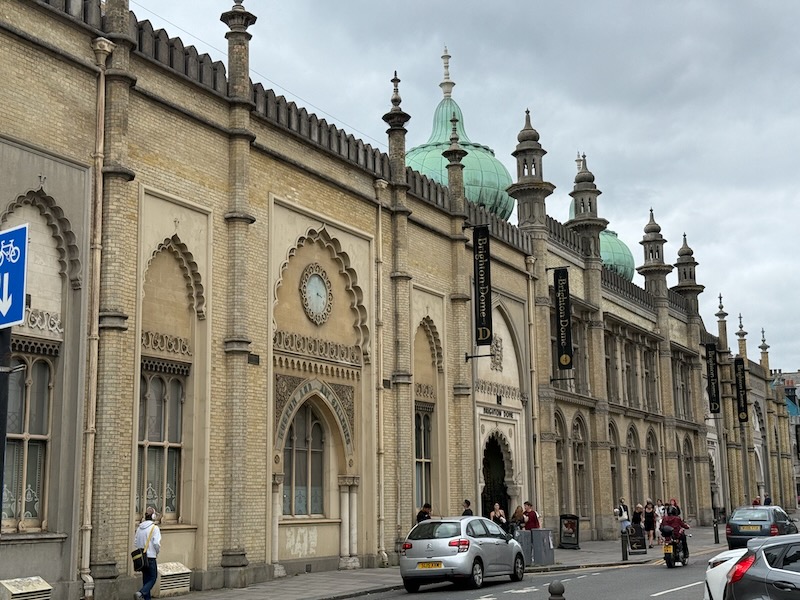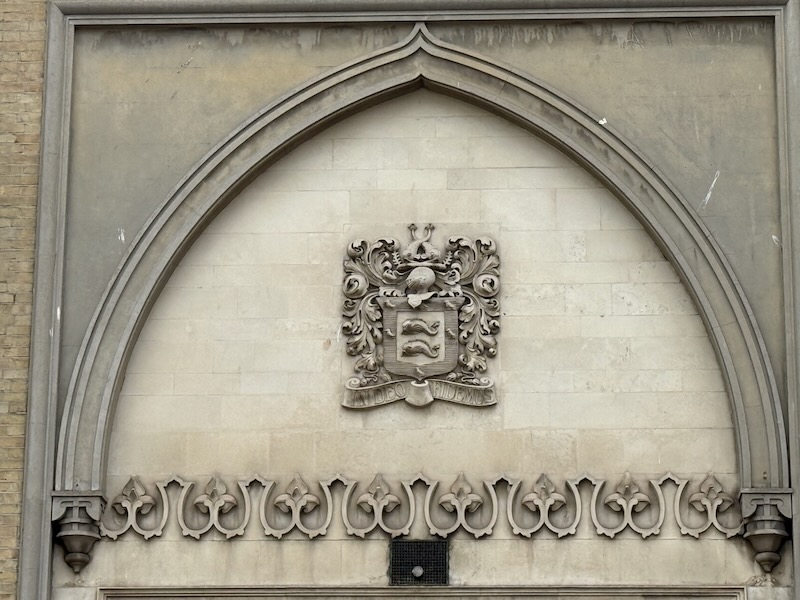Our Blog - August 2025 - England trip - Brighton
Initially when I started booking this trip, I thought Brighton was from the Brighton Beach Memoirs (the play by Neil Simon and the 1986 film) but in fact, the resort of Brighton Beach (built in 1868 in Brooklyn) was named after the English resort city of Brighton. Now officially "Brighton and Hove" after joining with the neighboring town, it dates back to Roman times and was listed as "Brighthelmstone" in the Doomsday Book of 1086. You may hear me referencing the Doomsday Book .. it is a manuscript record of the Great Survey of much of England and parts of Wales completed in 1086 at the behest of William the Conqueror. In many cases, this is the first written record of the various towns in England.
In the Georgian era, Brighton developed as a highly fashionable seaside resort, encouraged by the patronage of the Prince Regent (later King George IV), who spent quite a bit of time here. He initially came down for sea bathing, that was supposed to cure various illnesses. He liked it so much that he bought a farmhouse and turned it into the Royal Pavilion (you'll see this later). It is pretty big ... 278K people in the city with a metropolitan of close to 500K. A bit of trivia: it has a large LGBT population, leading to its recognition as the "unofficial gay capital of the UK". As of the 2021 census, 10.7% of the population of Brighton and Hove over the age of 18 identify as gay, lesbian, or bisexual, the highest percentage in the entire UK.
Our first stop was the St Nicholas Church, which is the 3rd oldest surviving building in the city. A church is listed here in the Doomsday Book but the present church dates from the mid-14th century. Like a couple other churches we have seen in this area, it is made from a black flint and has a square tower that looks like a defensive tower with crenellations around the top. Unfortunately for us, it is closed on Mondays. On a pillar in the cemetery is an Icon of St. Nicholas, most likely from the 17th century.
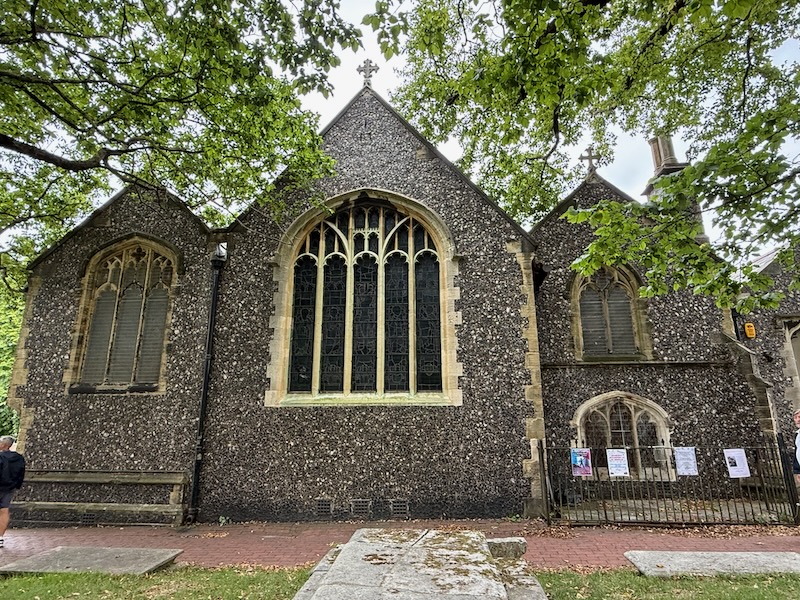
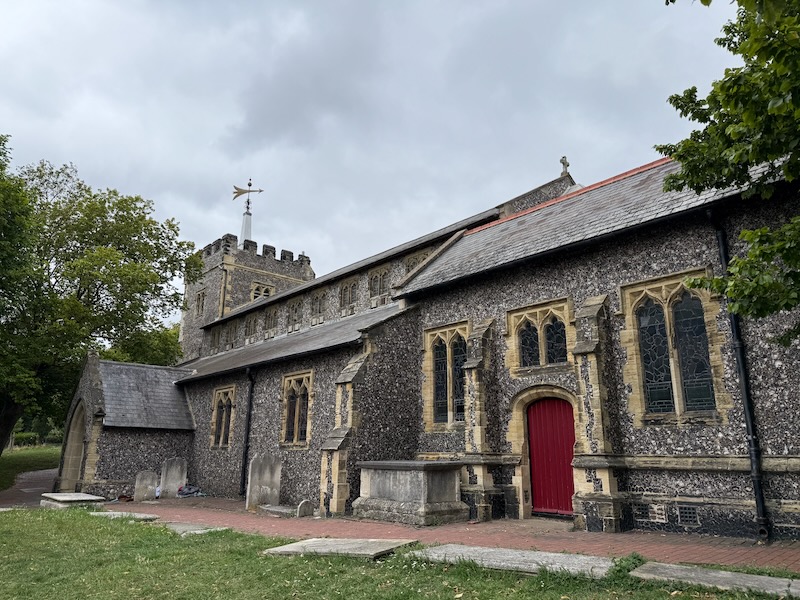
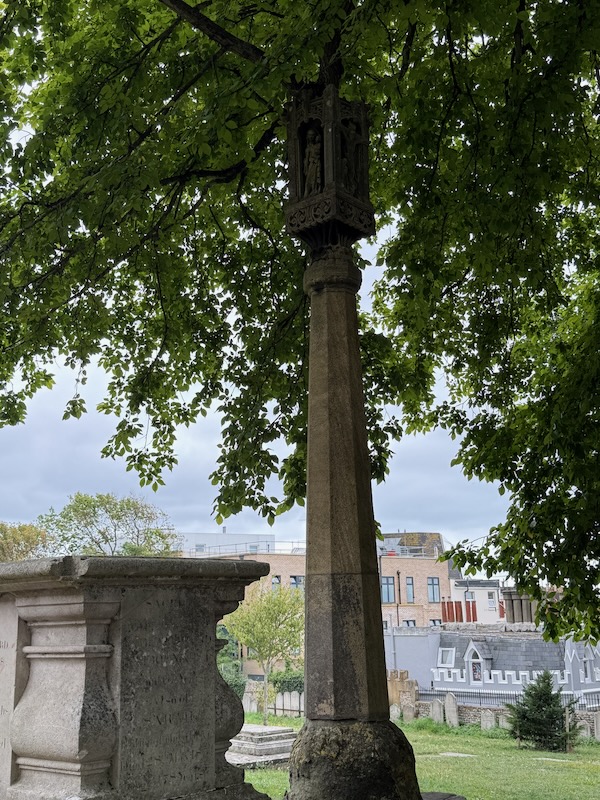
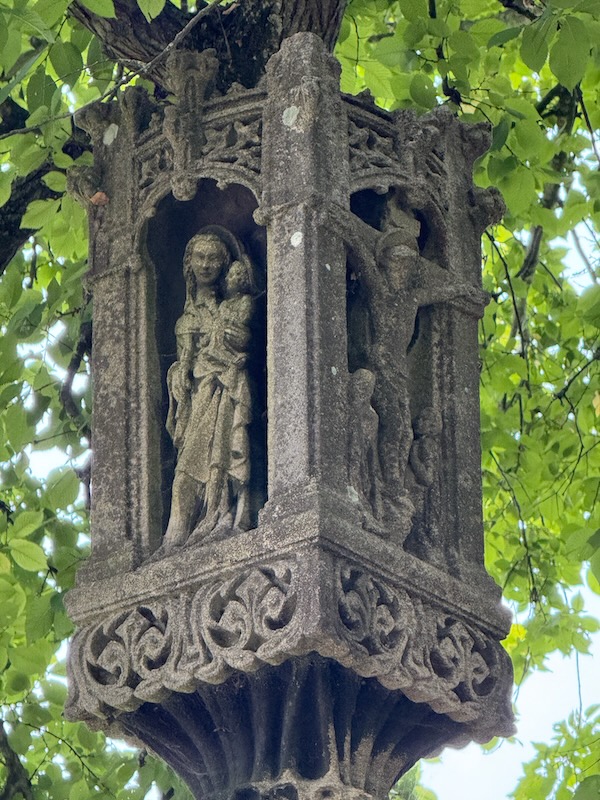
Queen Victoria celebrated her Golden Jubilee in 1887, and many towns built Jubilee clock towers to commemorate the occasion. It is 75 feet tall with 4 clock faces (1 on each side and you can see the 1887 date on the clock). There are also medallion-style mosaic portraits of members of the Royal Family on each side.
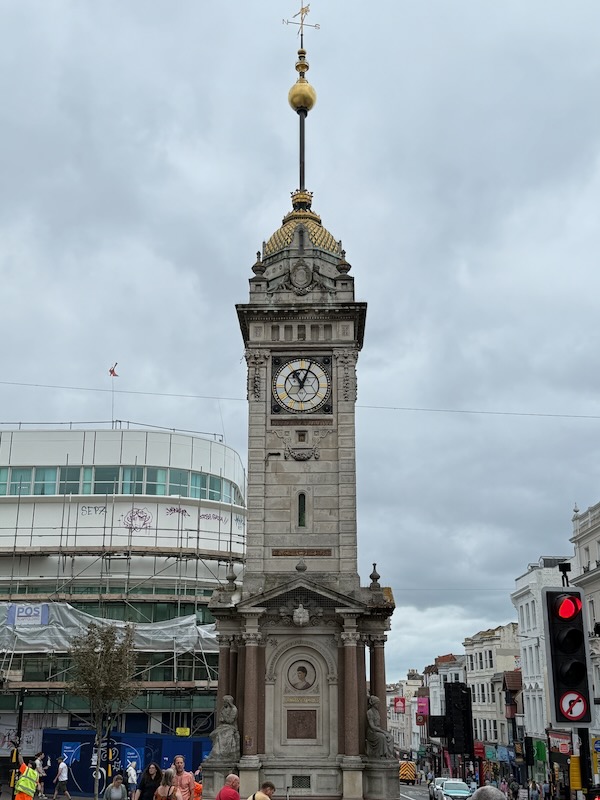
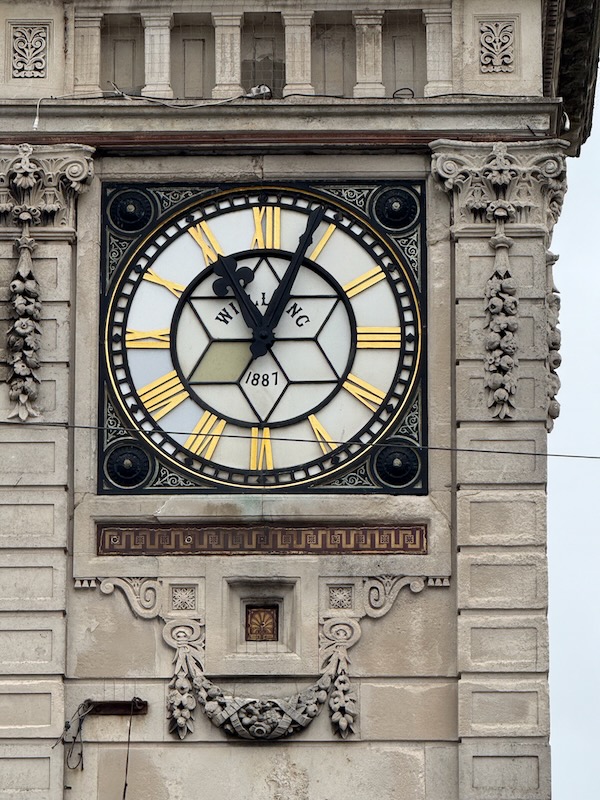
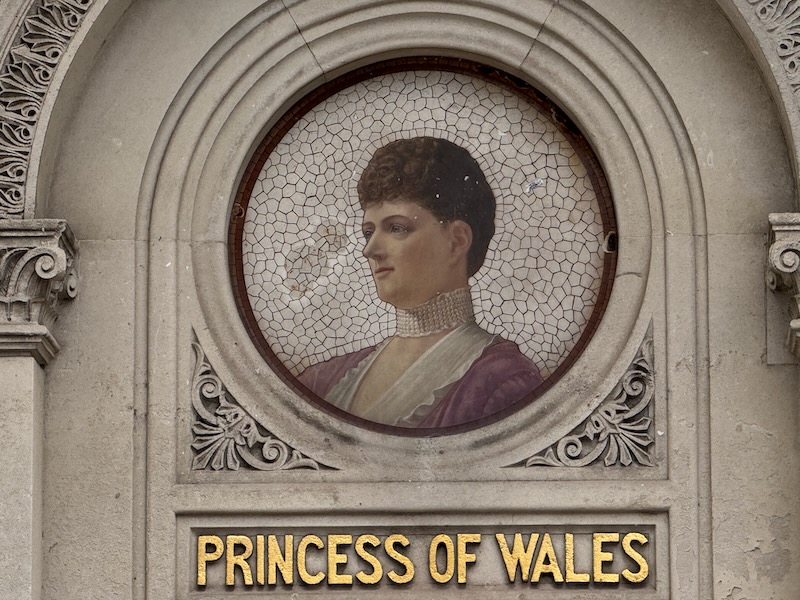
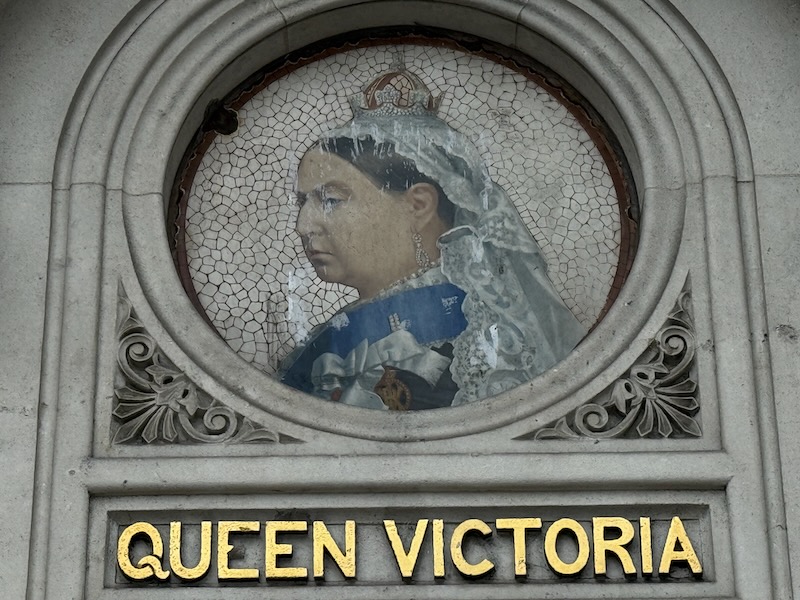
The Cricketers is (supposedly) the oldest pub in Brighton, dating back to 1547.
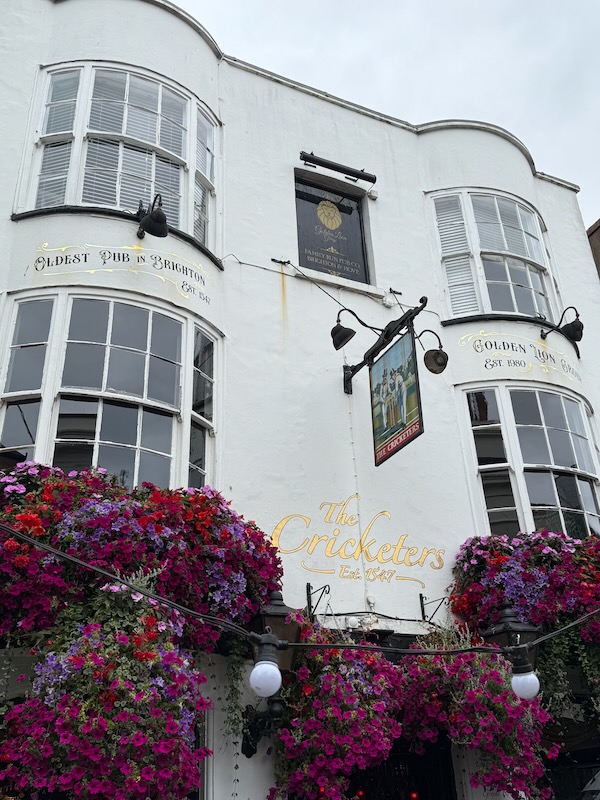
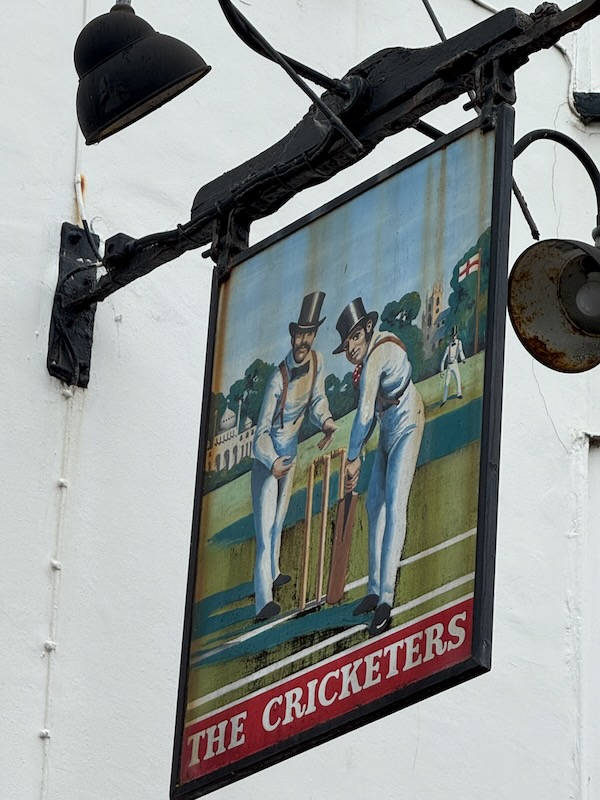
We then made our way down to the Palace pier, which was built in 1899 to replace the Chain Pier, which had collapsed in 1896. By 1911, it was a popular theatre and entertainment venue. The theater itself was damaged in 1973 and destroyed in 1986. The pier then was changed to be an amusement park with rides and roller coasters. I took some pictures from the promenade because they actually charge you to just walk down the pier and back (Started in 2024, May to September but free for local residents). A bit of trivia: The Who album Quadrophenia is partly set in Brighton. In the story, Jimmy becomes a fan of The Who after a concert in Brighton and takes a train to Brighton to enjoy experiences with other "mods" (a British subculture .. I had to go look up because I had never really heard much about them). Supposedly the album was inspired in part by band leader Pete Townshend spending a night underneath the pier in March 1964.
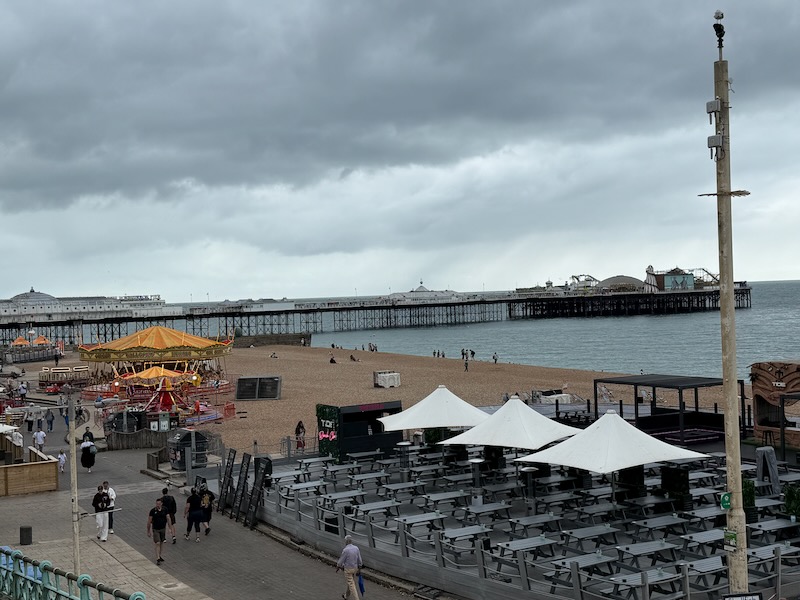
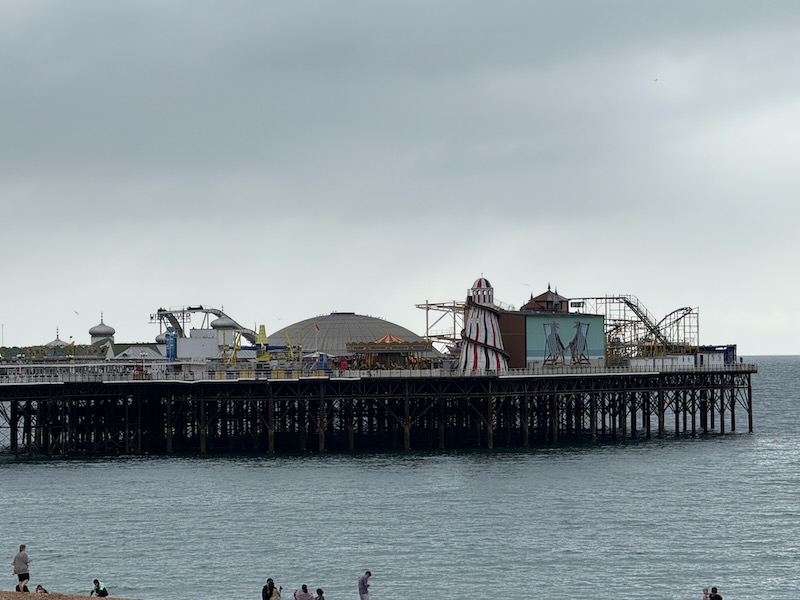
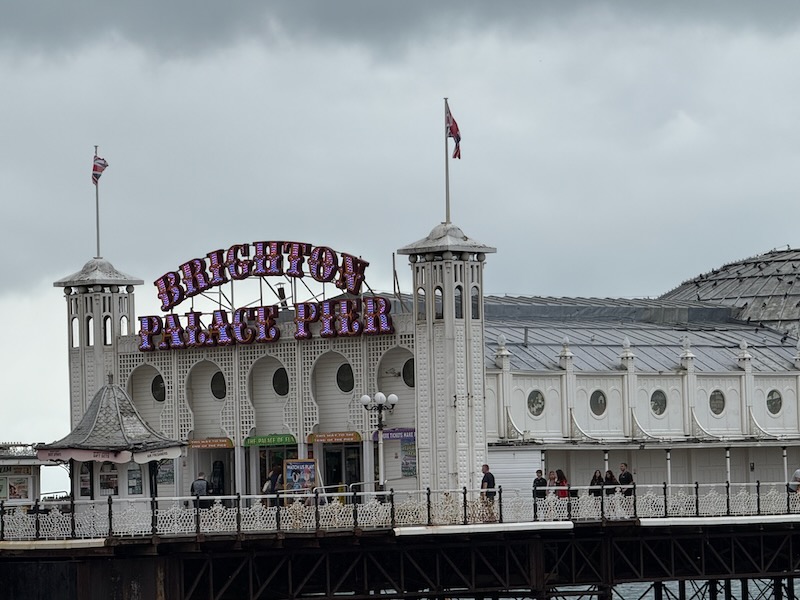
The Volk's Electric Railway (VER) was completed in 1883 and it is the oldest operational electric railway in the world (although not the first electric railway to be built, which was Miller's line in Russia in 1875). It runs along the seafront from the Palace Pier to Black Rock (near the Marina) with 1 station in the middle. We did the round-trip 30-minute ride. Along the way, we passed a couple interesting sights, including beach volleyball courts and a nude beach.
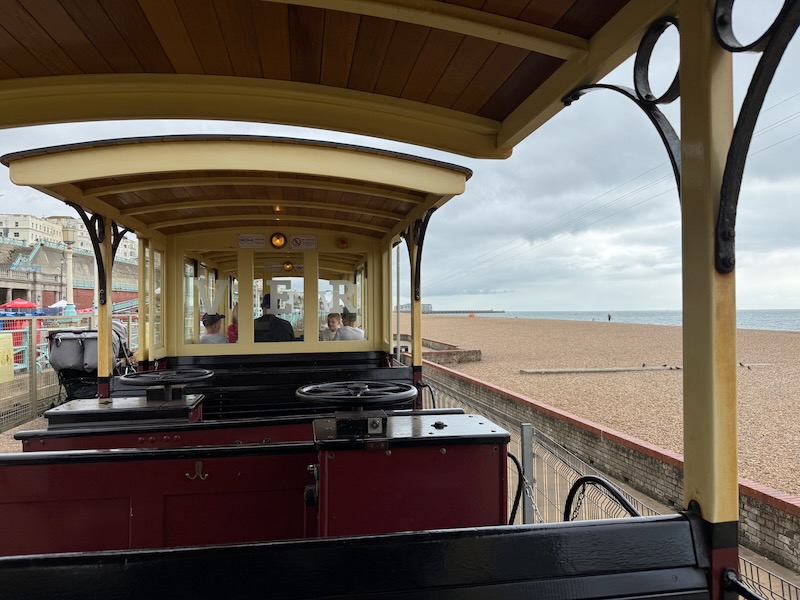
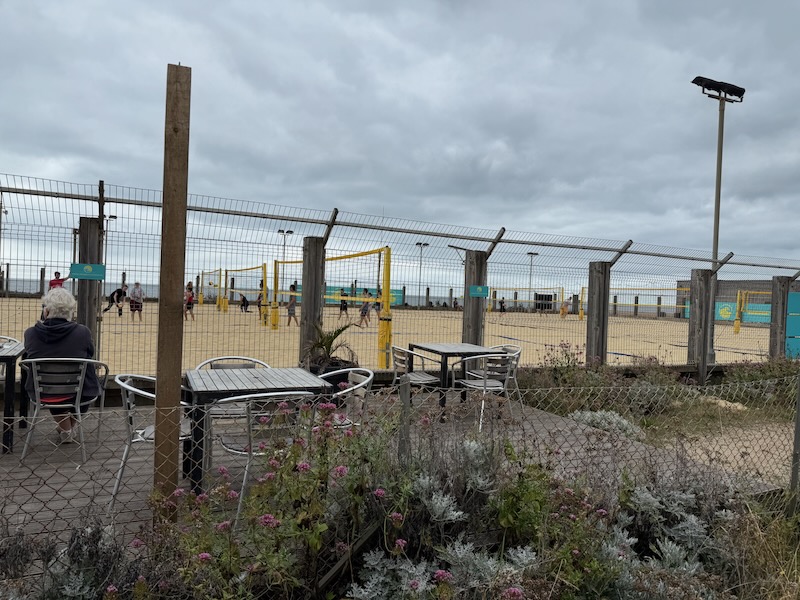
Not in the best shape, the Madeira Terrace is a long cast iron stretch of seafront arches and a walkway, built between 1890 and 1897. The covered walkway sits up against a cliff, facing the sea. There are 151 arches with decorations depicting Neptune, Venus, and dragons. There was a 3-stage elevator with a pagoda-style roof and a weather vane depicting a dolphin. It is also in pretty sad shape, no longer open due to needed repairs and 10 tons of lead and copper were stolen by thieves in 2019. There is an ongoing effort to restore the terrace, with £460,000 raised in 2017 to restore 3 arches, hoping that it would then attract more funding.
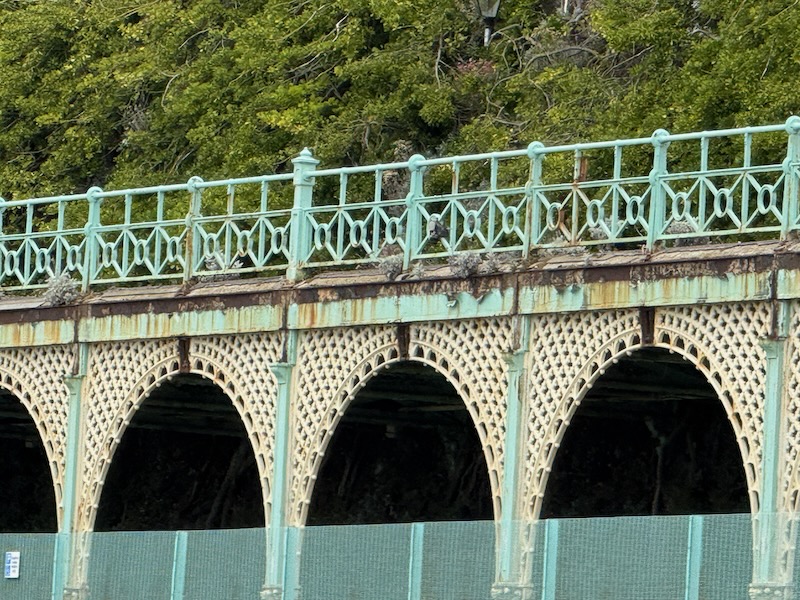
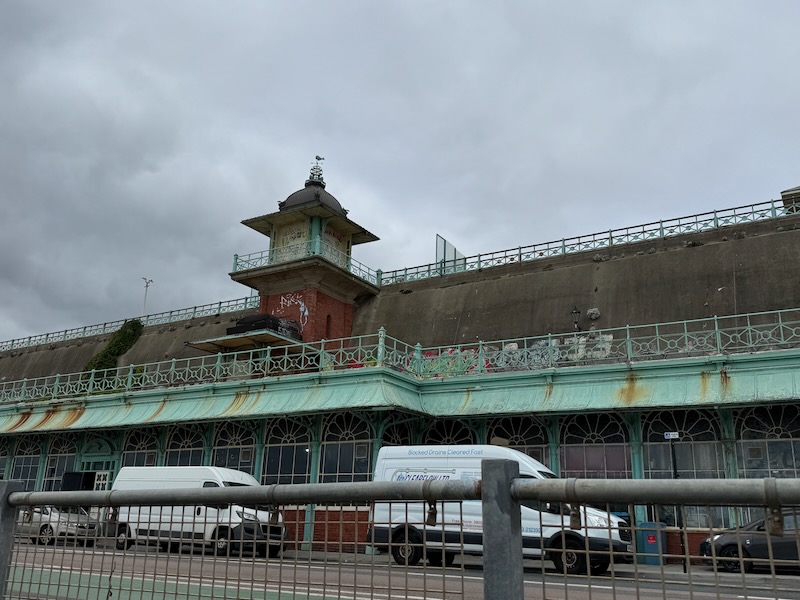
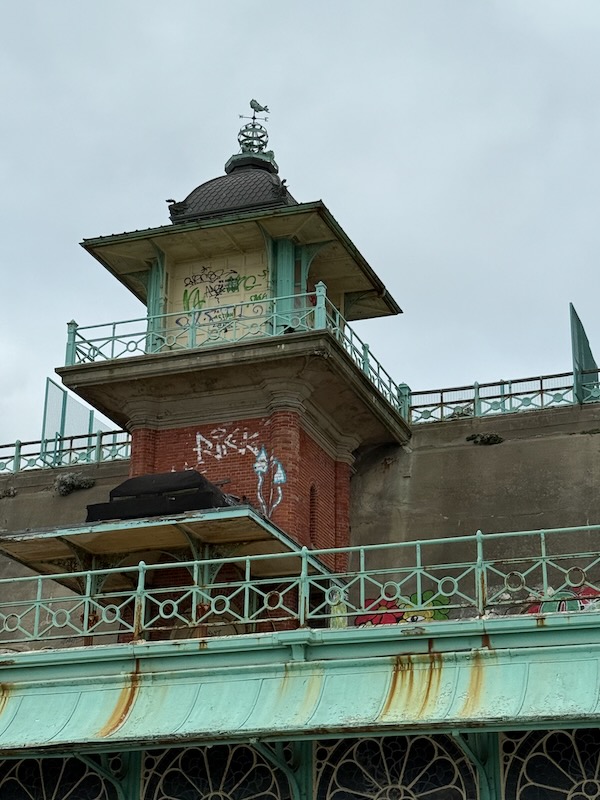
I mentioned that the Prince Regent/Prince of Wales (later King George IV) bought a farmhouse here in 1786. While initially it was meant to be for health reasons, since supposedly "sea treatments" was good for gout, it seems that it was a discreet location for him to meet up with a long-time companion that he has not allowed to marry (although supposedly he secretly married her anyway). He then redesigned and enlarged it, mainly in an Indo-Islamic exterior, which is now known as the Royal Pavillon. You will see lots of Chinese design features in the various rooms.
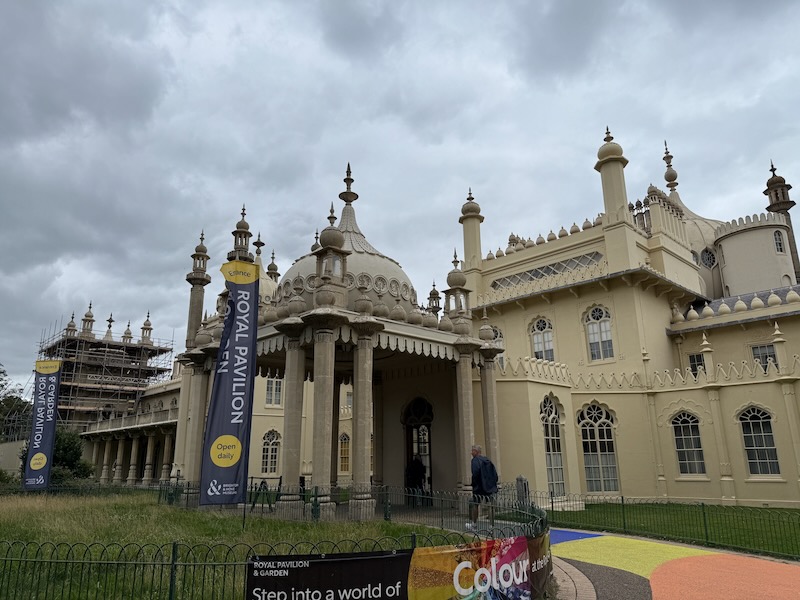
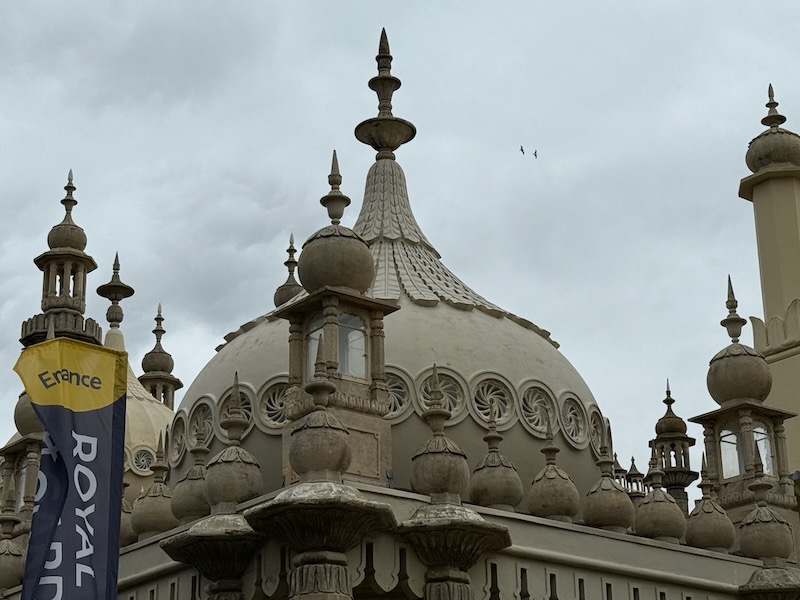
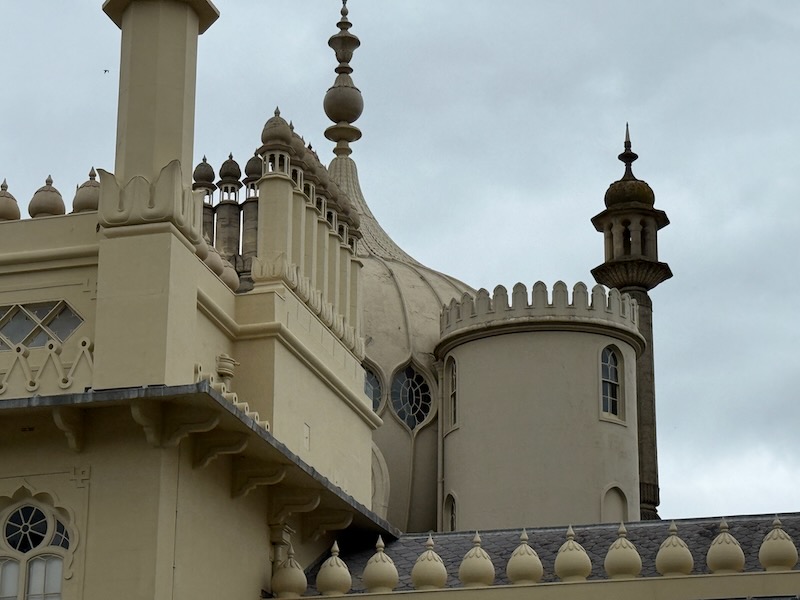
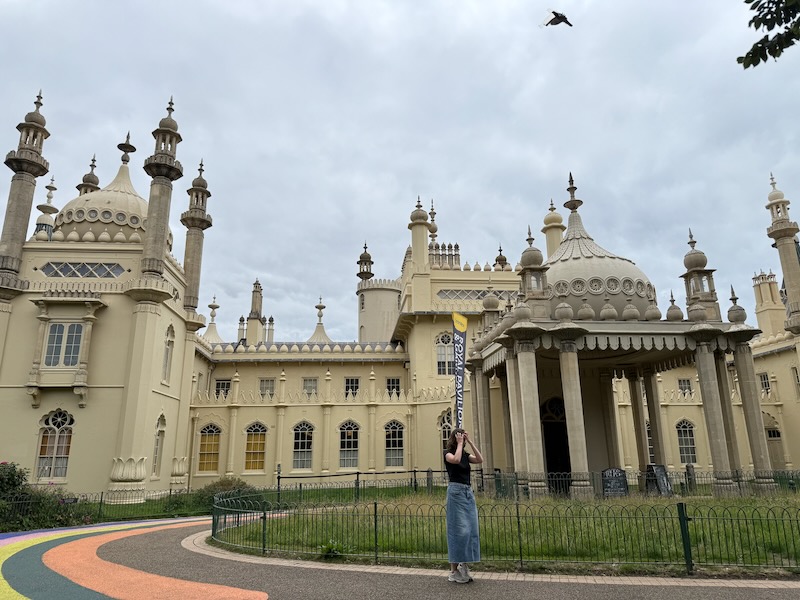
They had a nice audioguide (although a bit pricey at £4), and there is a virtual tour available at https://brightonmuseums.org.uk/virtual-tour-of-the-royal-pavilion/.
After the entrance hallway, there is this long room (called the Long Gallery) with a pinkish wallpaper and lots of Chinese decorations. This room, along with quite a few rooms, has quite a few "fake" things. The walls are decorated with what looks like bamboo, but not really. This bamboo doesn't have straight stalks, like normal bamboo. The people who created it had never actually ever SEEN bamboo so they made it up. The chandelier is in the form of an upside-down Lotus flower (you'll see more of these as well) and you can see how it looks like the roofline of a Chinese pagoda around the edges.
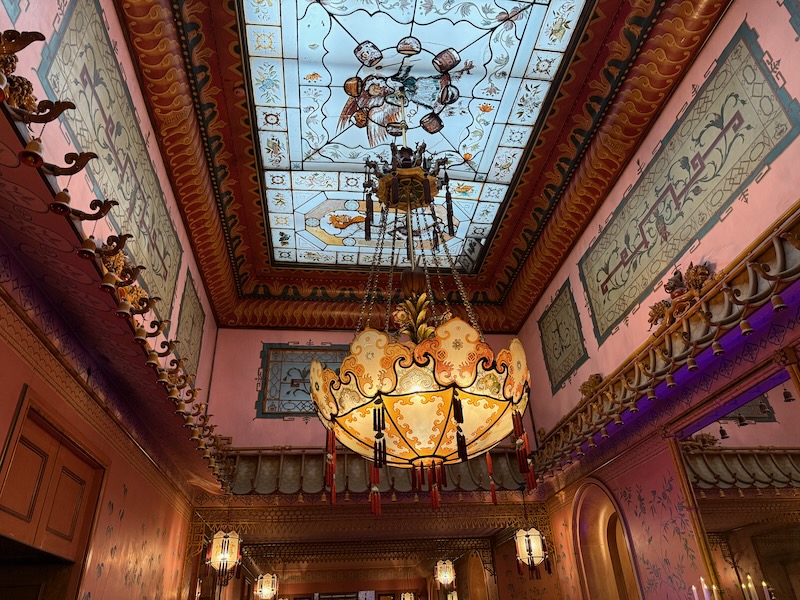

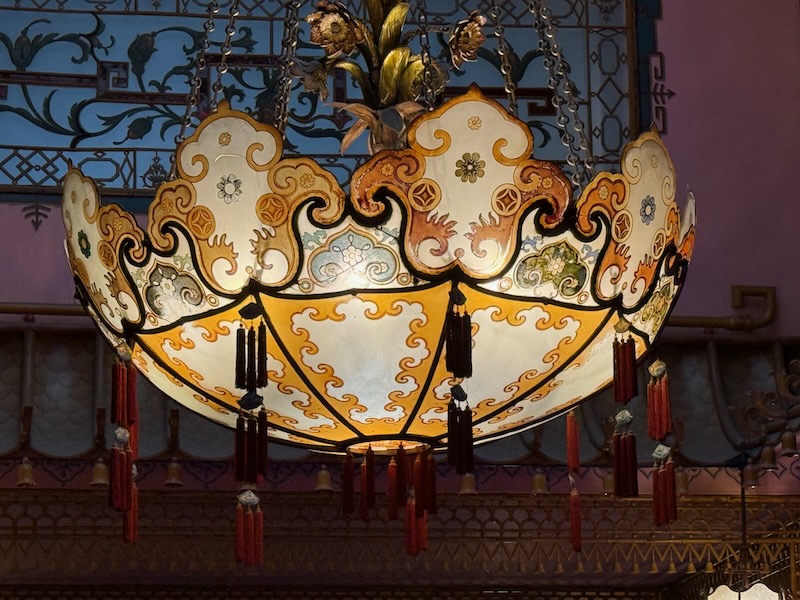
Guests would then enter into the Banquet Room, which was designed to impress guests to the Pavilion. This room continues the Chinese/Asian decorations that you will see throughout the Pavilion. The central cut glass chandelier is held by the claws of a silver dragon, and all of the chandeliers have the common Lotus flower shape. There are lots of dragons in this room (along with other rooms as well), including the chandeliers and the wall paper. The room was built between 1818 and 1822.

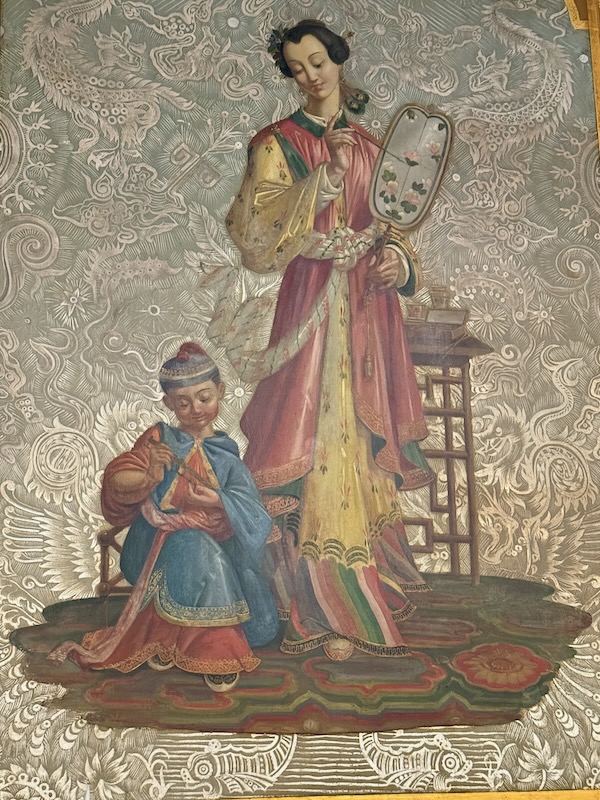
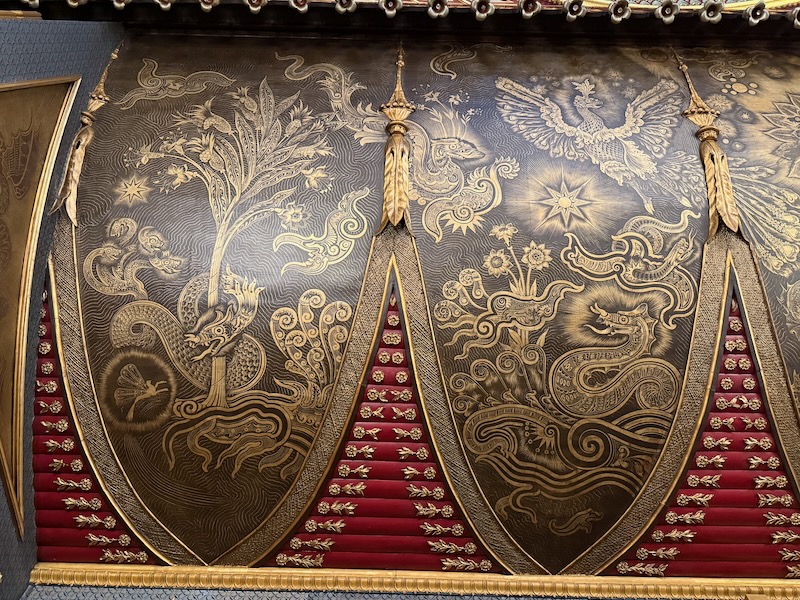
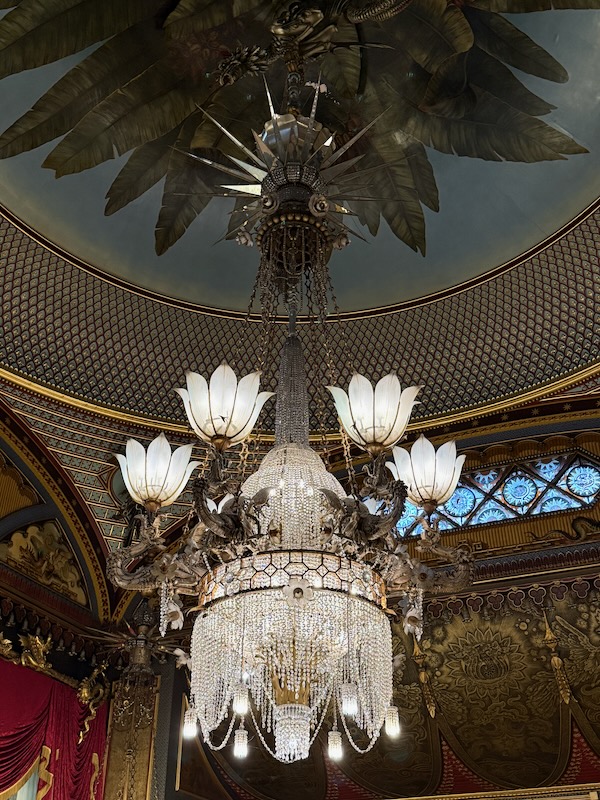
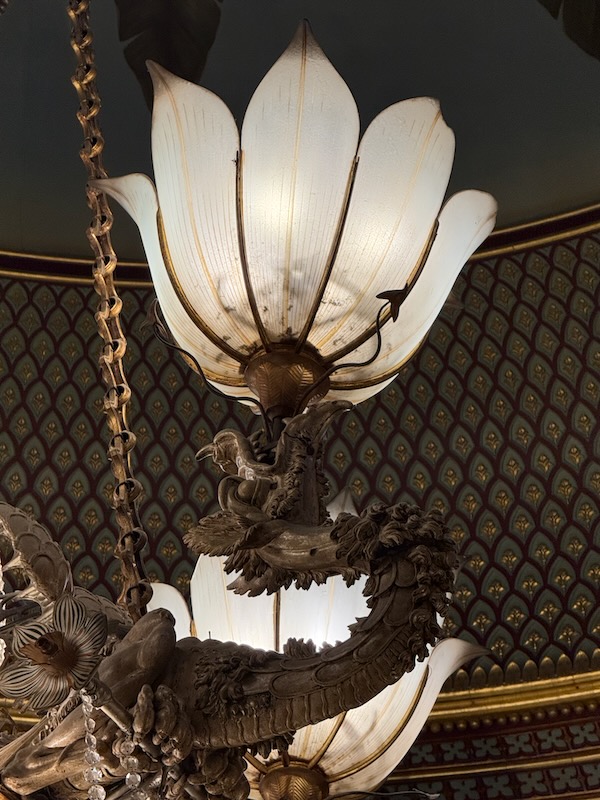
Unlike a lot of castles, the kitchen here is very close to the dining room, with a "staging room" in between where the dishes would be finalized to be sure they looked impressive. The copper range hoods look like Asian pagoda roofs and were designed to draw heat away from the range. There are bamboo columns topped with palm trees, which was very odd in kitchens, which were not necessarily "decorated" in other places. The kitchen was built in 1816, before the Banquet Room was completed and had all of the state-of-the-art technology at that time.
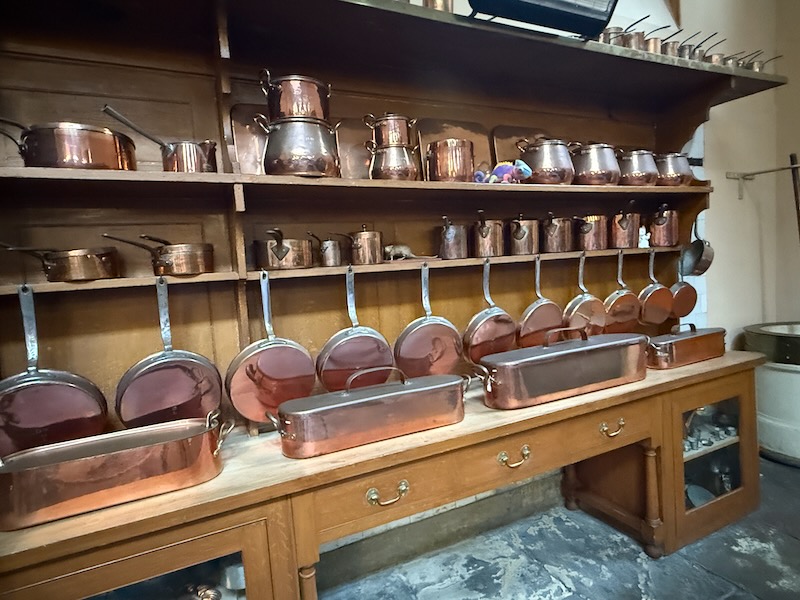
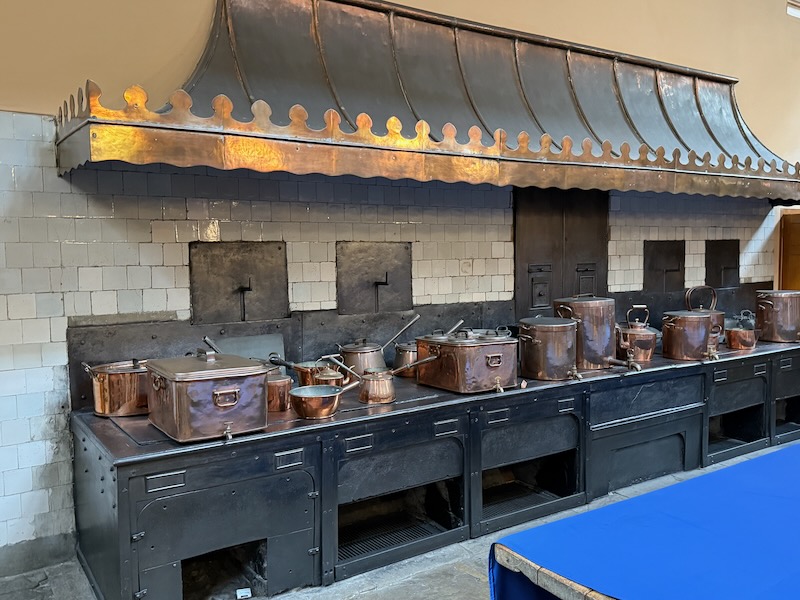

Next to the Banquet Room is a room that is much simpler, without too much decoration. This was where guests would go to relax after a large meal. The green color is supposed to be soothing.
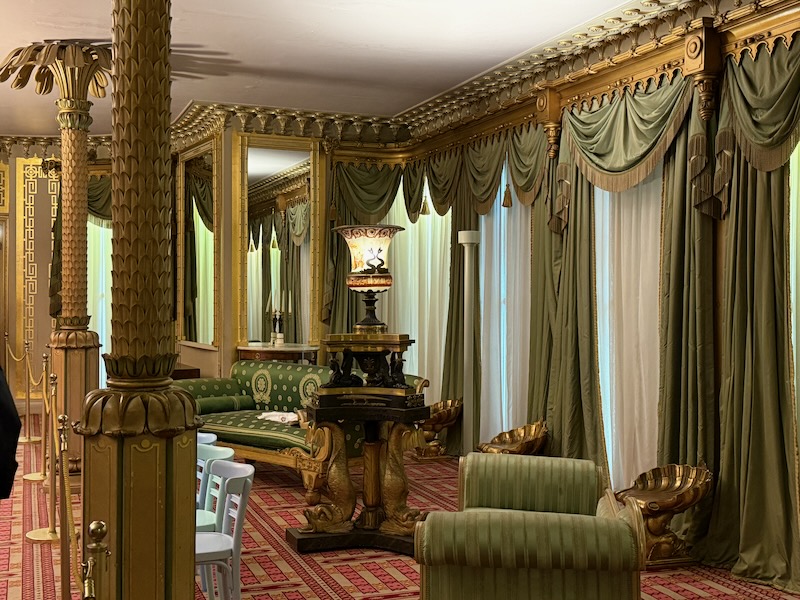
Then is another highly-decorated room, the Saloon. Guests would meet with the King here, which is why you see the sumptuous red silk decor.

King George IV was a music lover and would sing and play the piano to his guests in the Music Room Gallery. The carpet could be removed for dancing and they would be chalk on the floors to ensure that the guests would not slip.
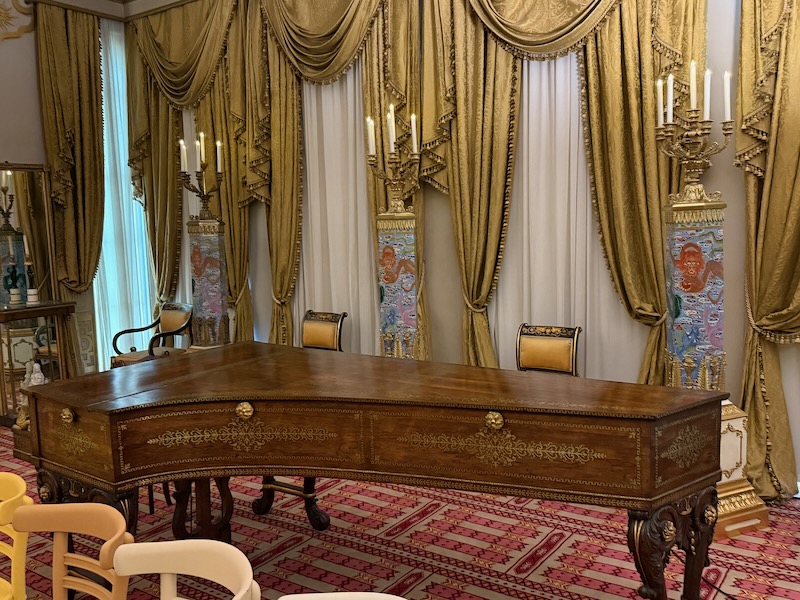
Then the more formal Music Room. The painted figures on the main chandelier were based on illustrations by William Alexander, an artist who had visited China and published a book about his travels. The walls are decorated with Chinese scenes and holding up the silk curtains are dragons and snakes. One interesting thing they said in the audioguide was that, in fact, the dragons are not Chinese dragons, but Japanese dragons since Chinese dragons are generally depicted as wingless, while Japanese dragons are also typically shown without wings. Also, snakes are usually regarded as dark, insidious, sly, and ruthless. So not something I would normally use as decoration.
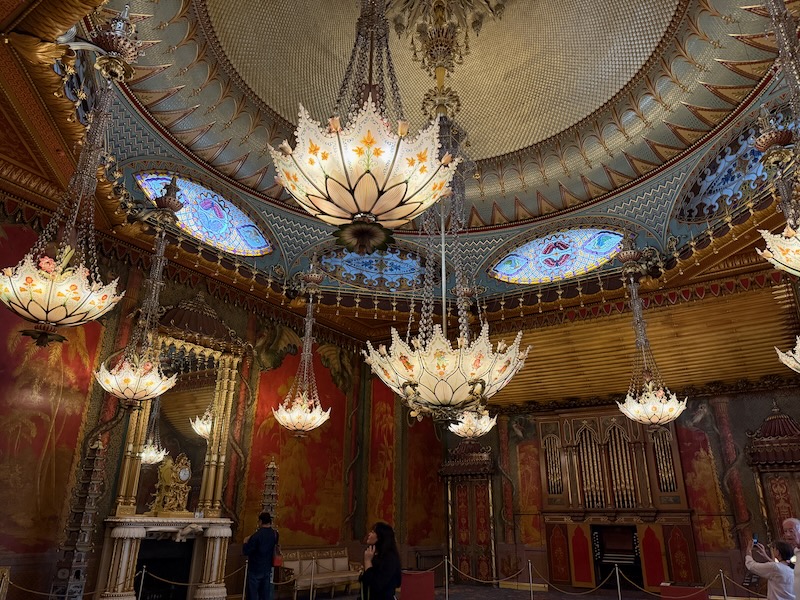
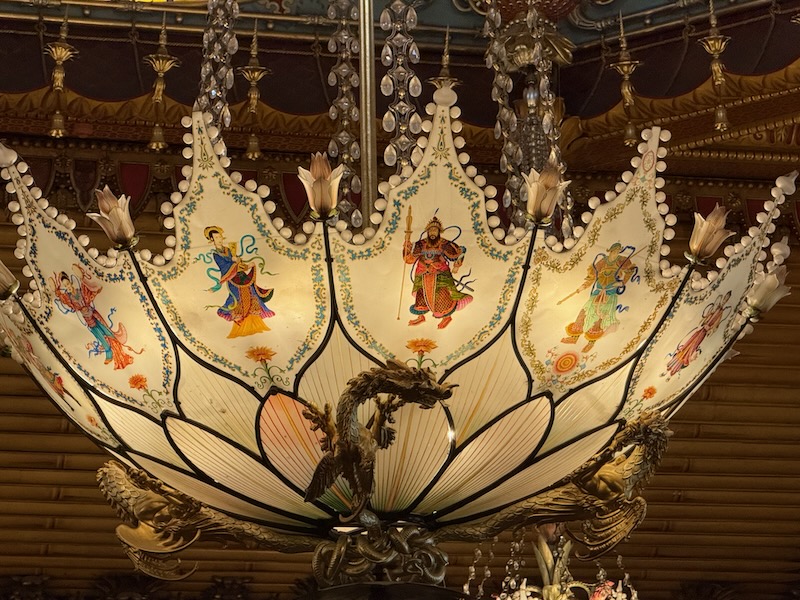
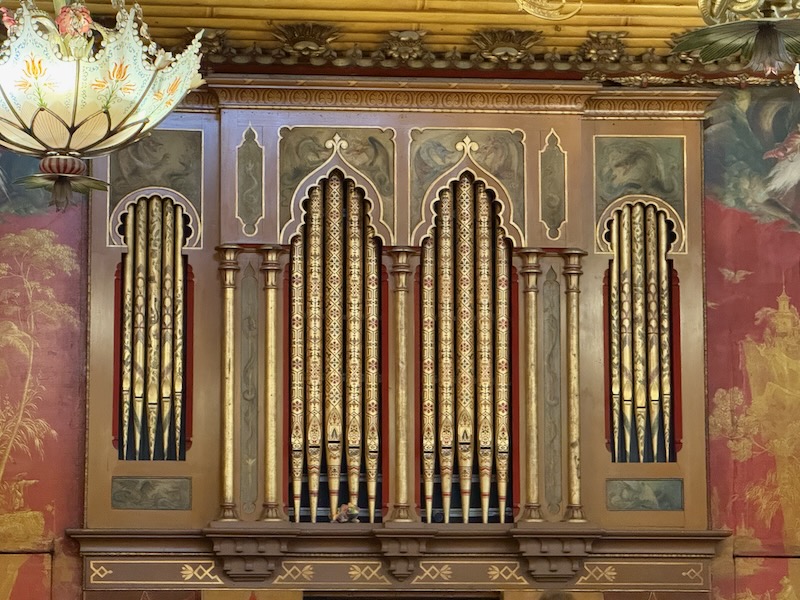

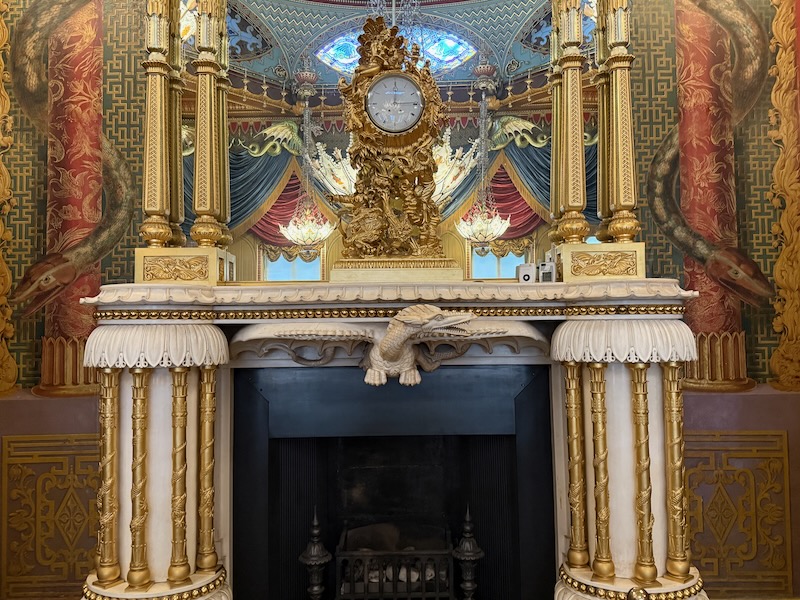
Then we headed into the Kings Apartments, although these are actually the 2nd set of Kings Apartments. Originally, they were upstairs but as the King got older, the stairs became more difficult and he moved his apartment downstairs. The Kings Bedroom is in a soothing green color. There are various chests in the room, all very much in an Asian design.
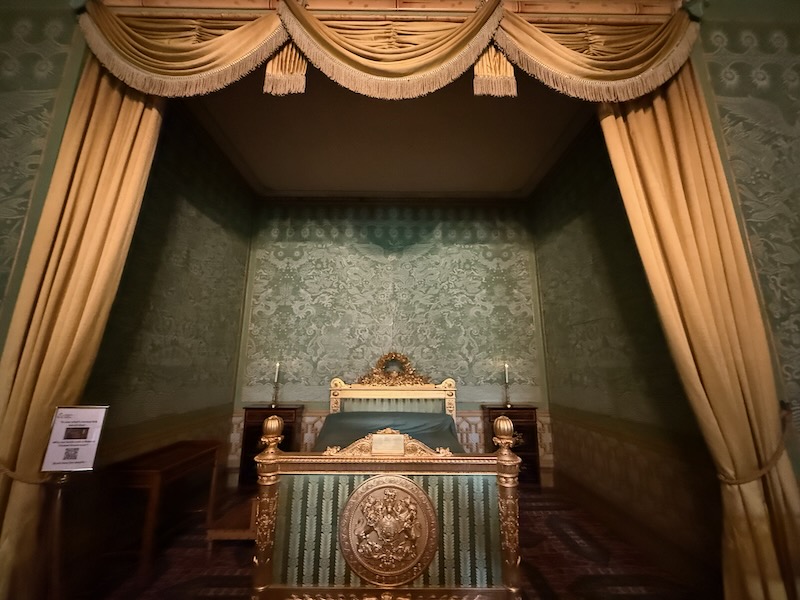
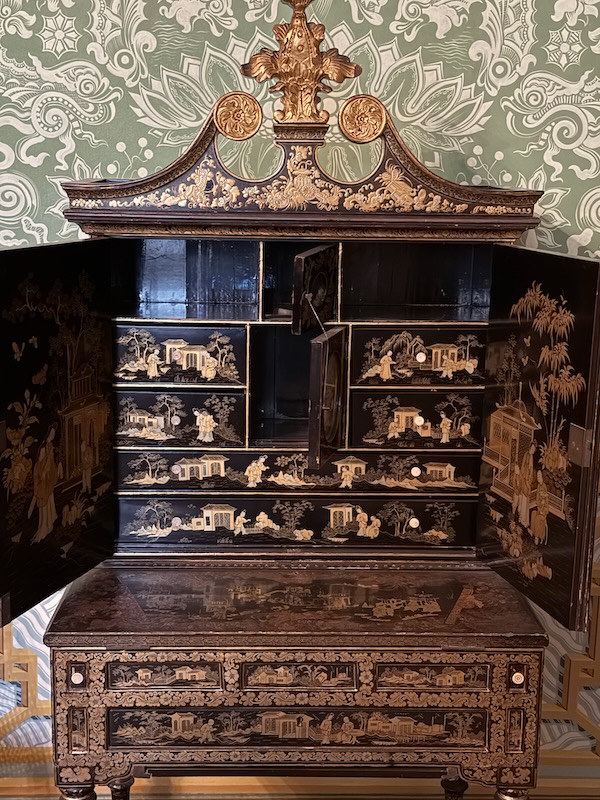
The stairs continue the design from the first room we saw, with the pink "fake" bamboo on the walls and "fake" bamboo rails (they are actually metal).

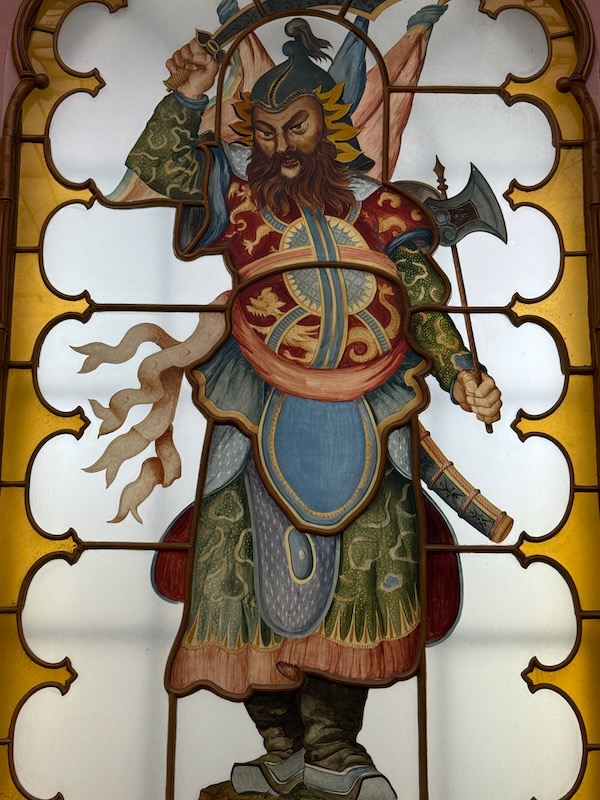
I have mentioned a few things where the designer made "fake" things that looked real. When the original architect enlarged the original farmhouse, he wanted it to look like it was made of brick so he used a technique where "fake" tiles were hung on a timber frame to give the appearance of brick but much faster.

Upstairs were rooms for the 2 sons of King George IV (only the youngest came to the throne) and for Queen Victoria when she inherited both the throne and the Pavilion. However, it seems that she didn't like it and sold it to the city in 1850. But the furnishings were packed up and moved to London to be incorporated in Buckingham Palace. In 1863, she returned many of the original decorations.
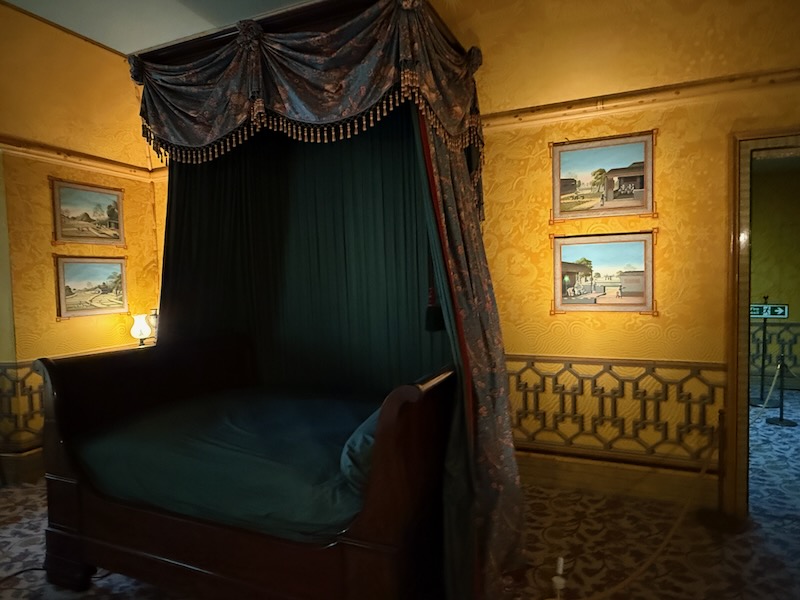
In 1860, the royal stables adjacent to the Royal Pavilion were converted to a concert hall, now known as the Brighton Dome. Brighton Dome staged the Eurovision Song Contest on April 6th 1974, when ABBA won for Sweden with the song "Waterloo".
